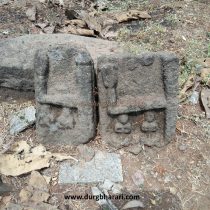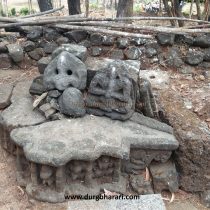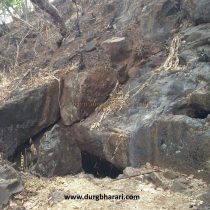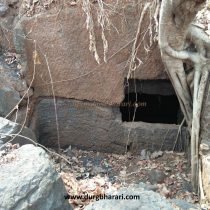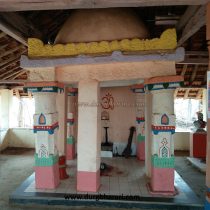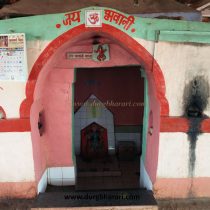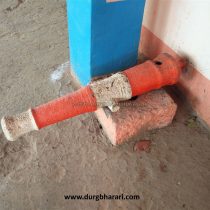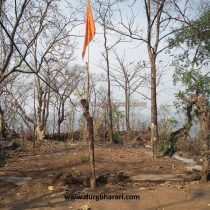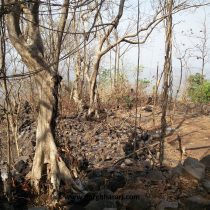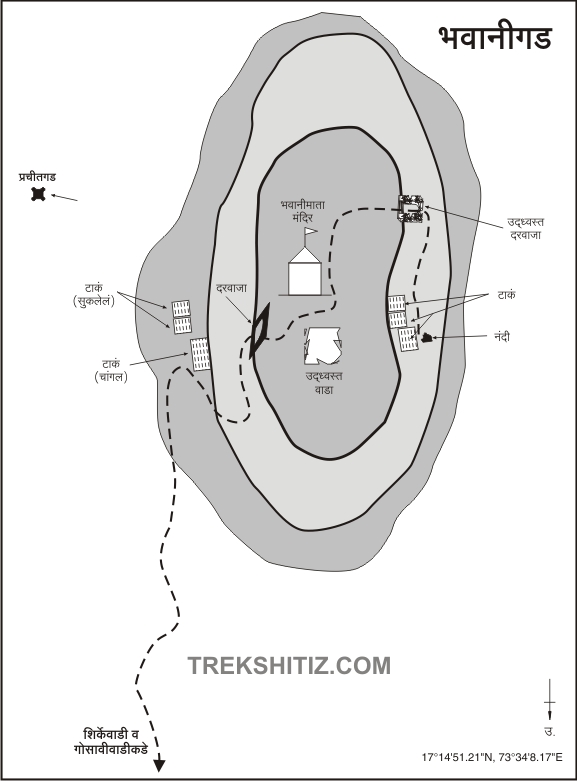BHAVANIGAD
TYPE : HILL FORT
DISTRICT : RATNAGIRI
HEIGHT : 810 FEET
GRADE : EASY
Bhavanigad is located on a small hill in Sangameshwar taluka of Ratnagiri district. Although it is not known exactly when the fort was built, the ancient Shiva temple at the foot of the fort, adjacent to the hot water cistern and the water tanks and warehouses on the fort suggests that the fort dates back to the 11th-12th century. Looking at the large number of Satishila and hero stones near the hot springs at Tural, it seems that a big war may have taken place here, but history is unspeakable. There is a paved road from Tural village on the Mumbai-Goa National Highway to Shirkewadi at the foot of the fort. This distance is 7 km. This road starts from Tural - Kadwai - Gosaviwadi -Shirkewadi and goes up to the steps at the foot of the fort. The Bhavani temple on the fort is bustling with villagers and steps have been built to enter the temple.
...
It takes 15 minutes to reach the fort by climbing these steps. Just before entering the fort, you can see three water cisterns and a barn carved in the rock on the left. The water in one of these cisterns is potable and a rope is required to draw the water after March. After seeing the cisterns, we climb the remaining steps and enter the fort through the ruined east-facing entrance of the fort. The fort is rectangular and six half-collapsed bastions can be seen on the ramparts of the fort. The ramparts of the fort are made of stones and the area of the fort is less than half an acre. Upon entering, a spacious temple of Bhavani Mata with a tiled roof can be seen in front. Inside this temple, there are two small stone temples, one with an idol of Bhavani Mata, the other with a Shivling and a Samadhi. In the area between these two temples, there is an idol of Shivaji Maharaj and another Samadhi behind it. The temple has a small painted cannon in the open. To the left of the Bhavani temple are the remains of a mansion, while to the rear is another ruined north-facing gate of the fort. After exiting this gate, there is a south end of the fort in front. From here, you can see three water cisterns carved in the rock as you descend the right footpath. All these three cisterns have water in them but as they are not used, soil and stones are falling in them and they are on the verge to be extinguished. A distant region is visible from the fort. This is where your fort round ends. As this fort was only used for surveillance, there is not much history available about this fort. When Konkan province came under the control of Shivaji Maharaj in 1661, he repaired the fort and built a temple of Goddess Bhavani on the fort. The fort is reported to have been conquered by the British in 1818.
© Suresh Nimbalkar

